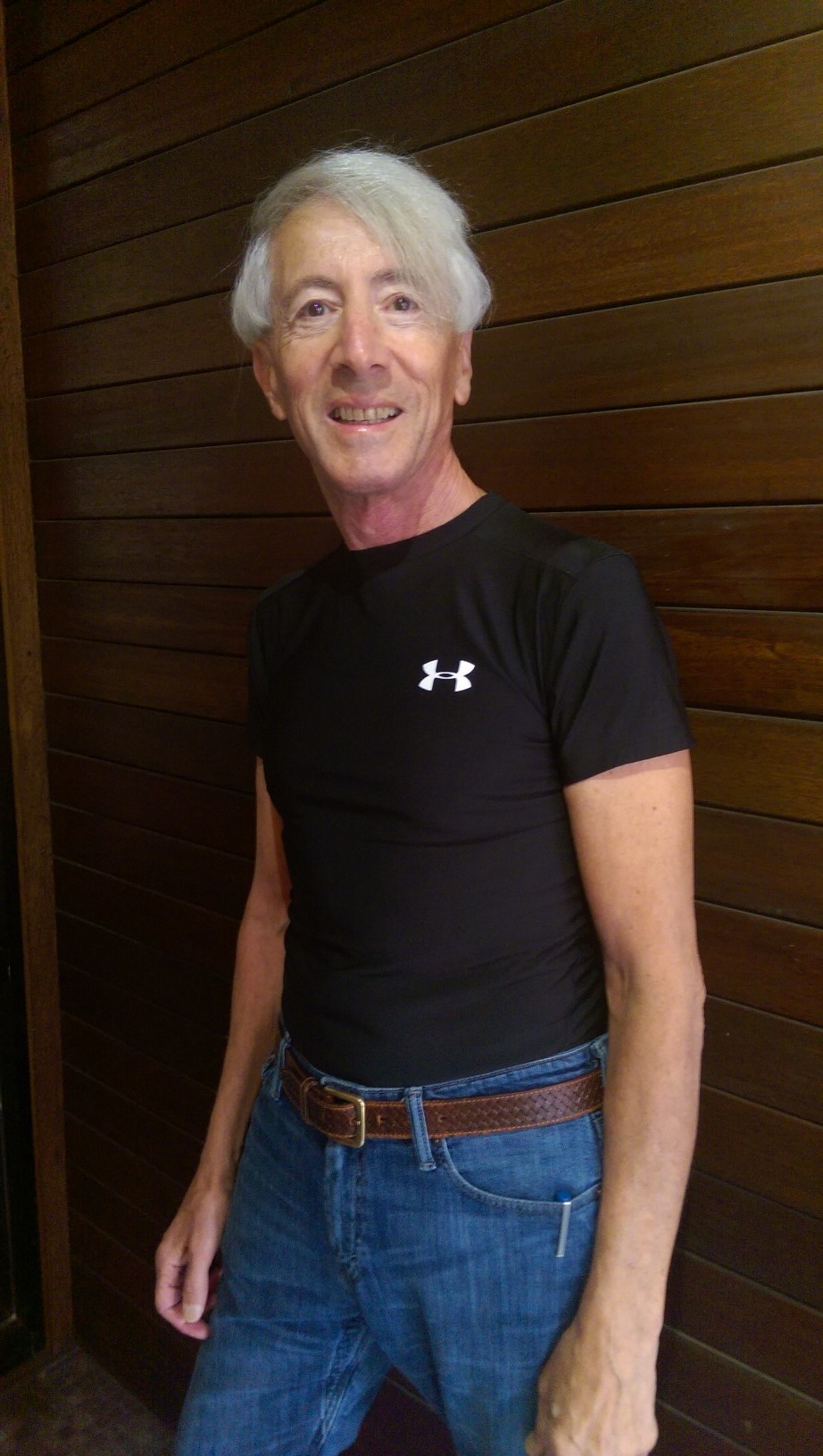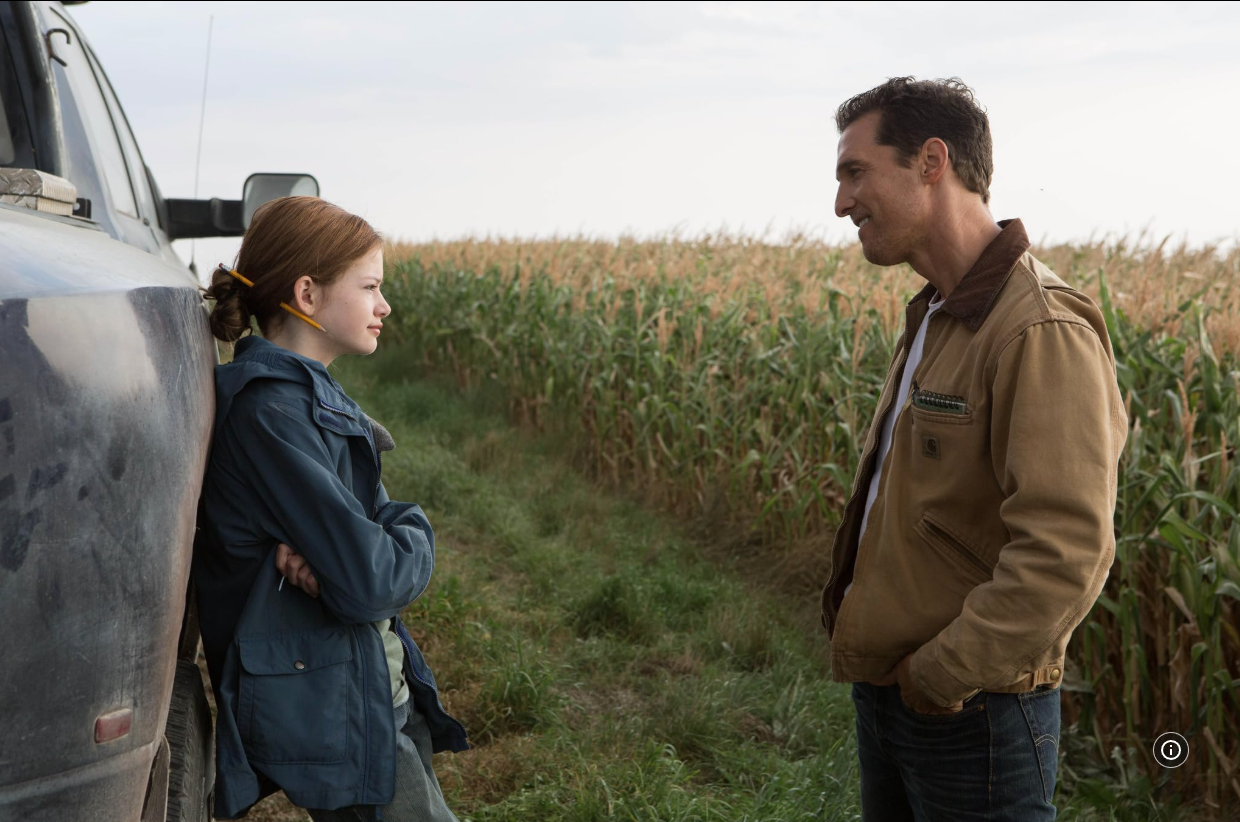Interstellar
It might be hard to imagine now, but for much of 2014, many awards pundits considered Christopher Nolan’s Interstellar to be that year’s Oscar front-runner. Nobel Prize–winning astrophysicists had been consulted for the movie’s visions of intergalactic travel and black holes. The science would be tight and the special effects groundbreaking. Another space flick, Alfonso Cuarón’s Gravity, had been a huge financial and critical hit the previous year, winning Best Director and six other Oscars. Still, no science-fiction or space movie had ever won Best Picture. Not 2001: A Space Odyssey, not Close Encounters of the Third Kind, not Apollo 13, not The Right Stuff, not Star Wars. There was a growing feeling throughout 2014 that Nolan’s magnum opus might be the one to finally go the distance.
There was just one problem: No one had seen Interstellar yet. Like most Nolan efforts, the project was shrouded in national-security-level secrecy. What we all learned after the film’s release was that nobody, it seems, was prepared for how strange a movie Interstellar turned out to be. It wasn’t the hard sci-fi of genre fiends’ expectations, nor was it the intense space adventure the fanboys were anticipating. Though it possessed some of those elements, it also had, shockingly, a soft center. What the hell was this pioneer of cinematic grimdark, this master of cool surfaces and downcast narratives, doing making a movie that suggested love was a physical force even more powerful than gravity?
In the years since its release, Interstellar has come to be seen by many as a masterpiece, or at least close to one. What makes the film so fascinating, and why it endures to this day, is precisely the thing so many people pegged as its fatal flaw back in 2014: its unabashed, teary emotionality. There’s a real tension running throughout between high-minded sci-fi and outright melodrama. Interstellar is filled with long stretches of silence and awe and scenes of characters explaining dizzying facts about astrophysics … but it’s also a movie in which Anne Hathaway gives a speech suggesting that love can transcend time and space. It’s a megabudget, technological marvel that meticulously re-creates the cosmos on an Imax screen, and yet, after all these years, its most indelible image is a close-up of Matthew McConaughey crying his eyes out.
This unabashedly proud embrace of sentiment, which at the time felt so out of character for Nolan, now feels like part of a continuum that leads straight to the fugue-state despair of his most recent film, Oppenheimer. Before Interstellar, the director had been perceived as a cool showman with an unmatched instinct for what audiences wanted. With Interstellar, however, he revealed himself to be a far more idiosyncratic and interesting artist, a man trying to walk the knife’s edge between popular entertainment and his own personal obsessions. It’s also the capstone of a thematic trilogy of Nolan films about fathers being separated from their children. Perhaps that’s why Interstellar now feels like one of the greatest films ever made about being a parent.
Despite their immense scale, Nolan’s films turn on small moments, brief exchanges or intimate scenes that the narratives wind up returning to repeatedly, allowing us to see things differently each time. Think of the conversation between J. Robert Oppenheimer and Albert Einstein by the small pond in Oppenheimer: The film keeps flashing back to that encounter, which winds up deciding the protagonist’s postwar fate — but it’s not until the very end that we finally learn what was said and what it revealed about Oppenheimer’s state of mind after World War II. In Interstellar, the thematic fulcrum on which the whole movie turns is a series of scenes where our hero Coop (McConaughey) says good-bye to his 10-year-old daughter Murph (Mackenzie Foy) in her room before heading off to space for one last mission. It’s the same room in which Murph claims to be haunted by a ghost that’s sending messages through her bookshelf. The film returns to it in its final act, when Coop travels into a black hole and finds himself trapped on the other side of this memory, watching himself as he leaves his daughter over and over again. Now, he tries to send messages back to his earlier self — essentially becoming the ghost in Murph’s bookshelf. This memory is a pivot point for the future of the human race. If Coop doesn’t leave, humanity can’t be saved. But as he’s continued on his unusually melancholy and lonely journey, he’s come to regard it as the greatest mistake of his life. How can these two ideas be reconciled?
Over the course of the film, Coop’s dream has gradually gone from one of exploration and flight to one of returning home. All of Interstellar’s talk of black holes and wormholes; all those massive machines spinning and connecting across the vast Imax chasms of space; McConaughey riding the universe’s biggest wave; that stentorian score, with its ticking clocks doing constant battle against funereal organ chords … It’s all been leading to this moment — a man replaying the time when he broke his daughter’s heart. And now, by essentially reliving his separation from Murph over and over again, Coop has the chance to correct it. No, he can’t change the past. He can’t keep himself from leaving. But he can want to stay.
By realizing that he wishes he could have stayed, Coop unlocks the ability to communicate with humanity’s past. His anguish and affection become the missing link between the cold hard facts of the cosmos and humanity’s survival. In other words: Yes, the secret ingredient is literally love.
This scene is subtly replayed one last time at the very end of the movie, albeit in a different context, when Coop finds himself back among humans many decades after he left. Now he’s on a massive space station, built from his daughter’s scientific discoveries (thanks to data Coop transmitted from inside that black hole), and he learns that she is still alive — very old, but still alive. (After having been played by Mackenzie Foy and Jessica Chastain, Murph is now played by Ellen Burstyn, who demonstrates in two minutes of screen time why she’s one of the greatest actresses of all time.) Coop visits her in a hospital room, surrounded by all her children and grandchildren, and this time, it’s the aging Murph who insists that her dad leave. “No parent should have to watch their own child die,” she tells him.
The way Nolan chooses to shoot and edit this sequence is fascinating. Coop practically floats in — the people around Murph part, but they don’t say anything. And as soon as Murph tells him to leave, he pretty much floats right back out. Nolan even employs a brief jump cut here, to add to the scene’s elliptical quality. We never observe Coop say anything to all these other people, who are presumably his grandchildren and great-grandchildren and great-great grandchildren. Some viewers see this as an indication that Coop is secretly dead and that this whole final section is just a kind of death dream.
Maybe. But there’s something more going on here. “Once you’re a parent, you’re the ghost of your children’s future,” Coop had told Murph earlier in the film. Later, he literally became the ghost in Murph’s room, trying to talk to her through her bookshelf. Now, he’s somewhere in between, a living person with a ghostly presence, out of time and place in a future century he really shouldn’t exist in. Coop, a man of science and technology, doesn’t believe in ghosts, and I suspect Nolan would agree. But all that science and technology cannot explain how Coop disappears into a black hole and finds himself trapped inside his daughter’s memory. Or, for that matter, how he then emerges from that black hole and finds himself at her deathbed. Coop himself doesn’t really ask how or why, either. There is talk of higher powers, maybe of highly advanced humans from the future who are controlling things, but it’s mostly just hand-waving. The only one with an explanation is the dying Murph. “Nobody believed me, but I knew you’d come back,” she tells Coop. “How?” he asks. “Because my dad promised me,” she says. Nolan needs to get to his happy ending — a happy ending he reportedly added to the script — because, like a good father, he needs to make sure things will turn out okay.
It’s telling that Interstellar was originally set to be directed by Steven Spielberg, who has always been more comfortable with sentiment, perhaps because he has little problem accepting the presence of the divine. A strain of mysticism, even religiosity, runs through Spielberg’s work, whereas Nolan is the guy who made a superhero trilogy without ever resorting to the supernatural or to aliens with fantastical powers. A materialist and a rationalist, Nolan builds his films with an engineer’s precision, with a constant need to understand and explain how things work. But in Interstellar, for all the astrophysics packed into the script, he can’t really explain it all. He cannot undo the contradictions, only embrace them. Because he understands that being a parent sometimes means surrendering yourself to the mysteries of the universe, to the overwhelming cataclysm of love.



